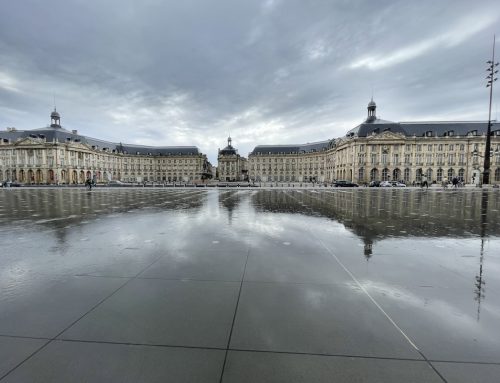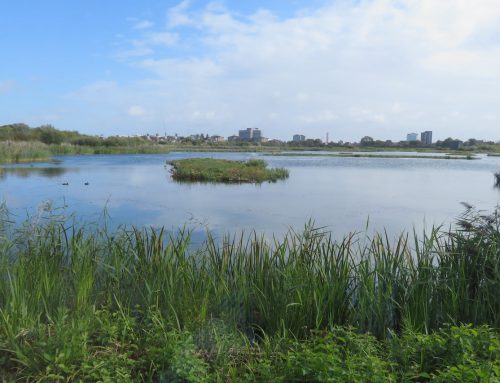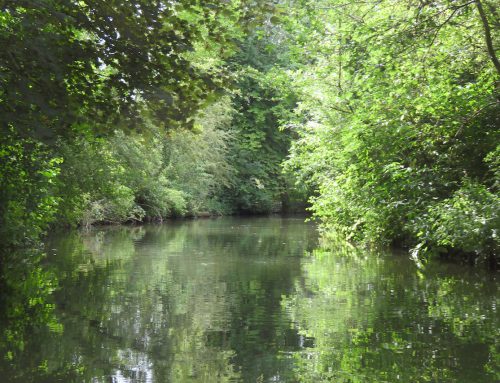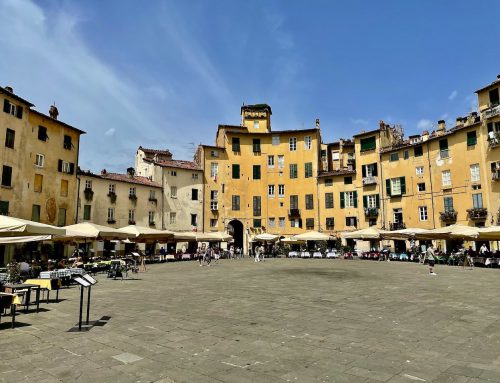If I met Jesus
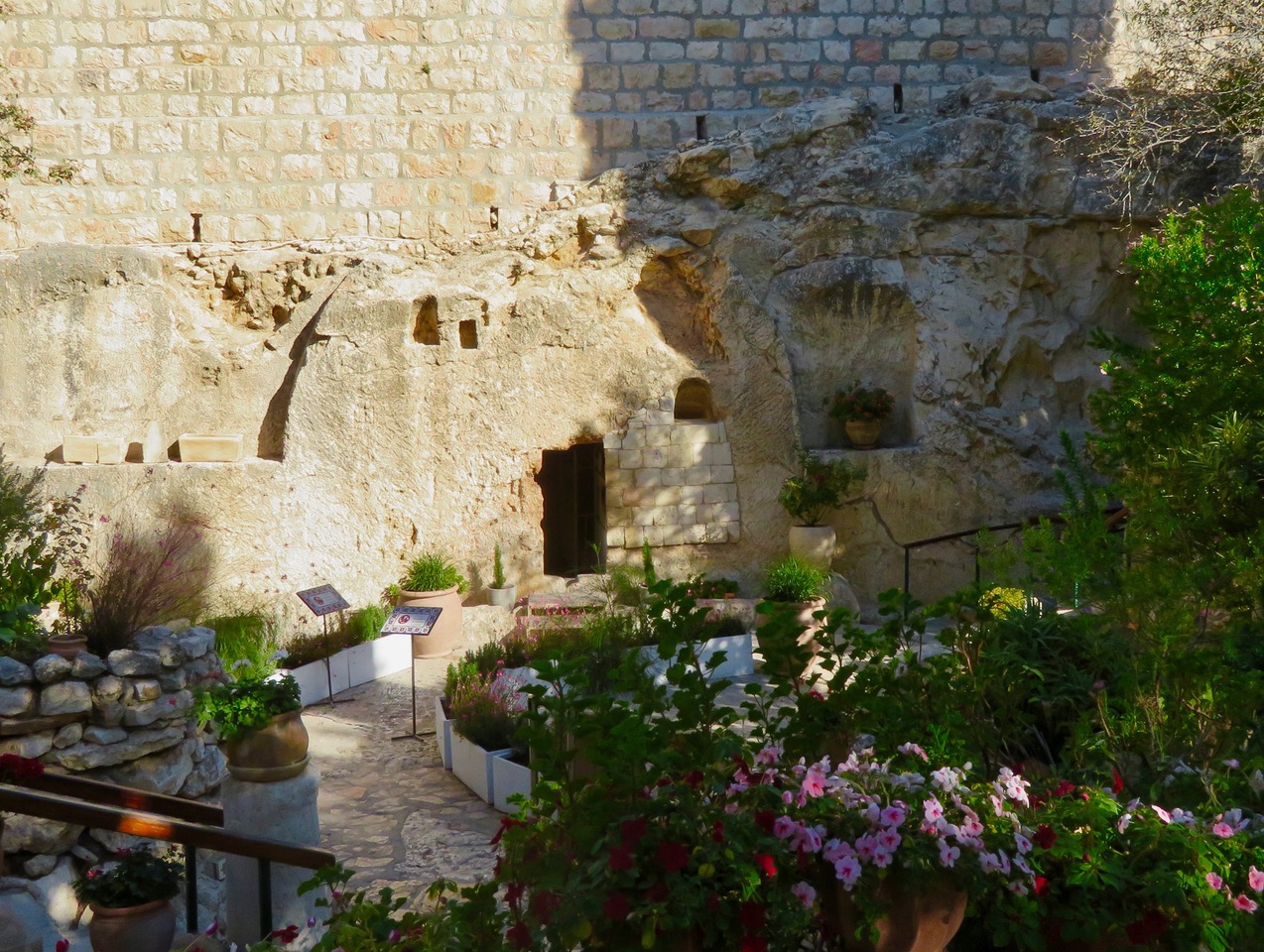
The Garden Tomb

The Garden Tomb
Jerusalem, Israel
I never met Jesus, but rather wish I had, as not only did a religion develop around him but an industry as well. There is no better place to see this than in Jerusalem and no better place in Jerusalem than the Garden Tomb. It was down a peaceful alley, outside the city walls, and a place I was encouraged to visit by friends. It was where they said Jesus had been entombed.
I arrived at the tomb the moment the front gates opened in the morning; it was odd to find two armed soldiers nearby, although they were busily talking to each other and were not looking ferocious.
“You here to worship?” asked an American voice, grey-haired, grey-bearded, perhaps late sixties, and wearing a blue jacket that looked too bulky for the scorching day ahead.
“Maybe,” I mumbled, knowing I was largely there to gawp.
The volunteer looked at me with suspicion and then pointed towards a window to my right. “Check in there,” he said, “entrance is free.” He then turned on a squeaky heel and headed towards the interior of the lush garden I could see over his shoulder.
For that is the Garden Tomb - a well-tended small park, running water, healthy trees, concrete benches on which to ponder and, of course, a tomb. It is where Jesus was taken after his crucifixion, then resurrected, as three days later his body had gone. It is near a spot called Golgotha, meaning “skull” in Aramaic, where many ill-fated individuals were crucified in earlier times. When you are there it is simple to imagine, even if the locals have now turned Golgotha into a bus park.
Yet there is a problem, the Church of the Holy Sepulchre, 20 minutes’ walk away. It has a Golgotha as well, and a tomb, and a stone where Jesus’ body was anointed after death. Clearly there cannot be two Golgothas. Given a choice, I would vote for the Garden Tomb as, put simply, it looks like it. I have long had the failing of judging by appearance.
I may have been first in to the Garden, but I was first out as well. The place was soon besieged by hundreds of visitors. One moment I was sat alone on my concrete bench, reflecting on the meaning of existence, the next I was surrounded by mankind. Some were talking religion, some were singing hymns, a few were praying, and many were silent. In one group I saw three men laughing. Their topic? Football. It takes all sorts to become a pilgrim, I concluded. It was time I made my escape.
After all, the Wailing Wall was barely a ten-minute walk away. It is the most religious site in the world for the Jewish people but has one thing missing. No one was wailing. The pilgrims were terribly restrained.
The way to pray at the Wall is to first write a note to your Maker on a piece of paper, fold it, squash it into one of the many cracks in the Wall and then say your prayer. Once done, you leave but your note remains.
The Wall is also a sad example of gender inequality, which surprised me. Men go one end, ladies the other and watch out anyone who declares equivalence. This, in a major seat of religion.
I saw one lady try. She arrived, guidebook in hand, looked steadfastly at the Wall ahead and retrieved a local skull cap - they call them kippah - from a nearby basket open to all. I worry about communal kippahs, as mine had been on a hundred earlier heads and I was sure I saw a flea. The woman did not have the same concern. Undeterred, kippah in position, she strode towards the wall. Two steps further, and in a flash, security intercepted her.
“No!”
Another step. The woman was determined.
“Lady!”
For a moment she hesitated. That was her mistake.
“Ladies go there.” I saw two guards point in unison towards a small stretch of Wall, 50 metres away. At the Wailing Wall men go left with plenty of space, ladies go right and jostle. I was about to see trouble.
But no, the woman thought better of it, gave the guards an immobilising stare and I watched them visibly shrink before her. Neither uttered a syllable from that moment.
I walked on, my kippah perched precariously, and leaned towards the woman as I passed her.
“Good on you,” I stage whispered.
The woman looked up, realised I had spoken, and shrugged, both palms upwards in exasperation. She then slowly turned, to leave the Wall behind her. For her, there would be no praying in Jerusalem.
As I watched this drama unfold, it forced me to think. If I did meet Jesus, what might he say? Would he approve of the armed soldiers outside both his tombs? Would he encourage the endless photographs, the ceaseless shoving that accompanies pilgrims on tour, or the industry that pilgrimage has become? And would he be happy that men and women were separated when it came to prayer at the Wall?
But I am sure he could direct me to the real Golgotha.
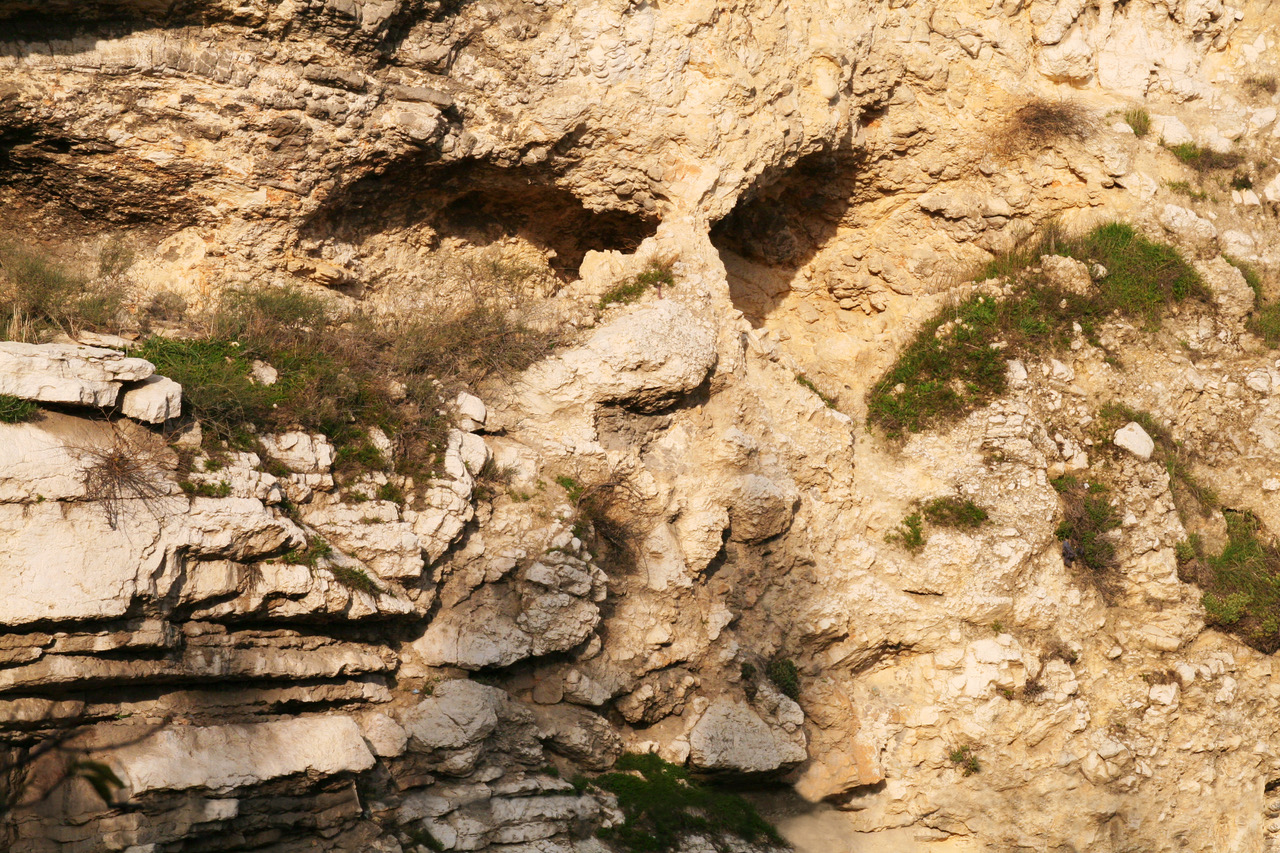
Golgotha and its skull. See the two eye sockets and the nose
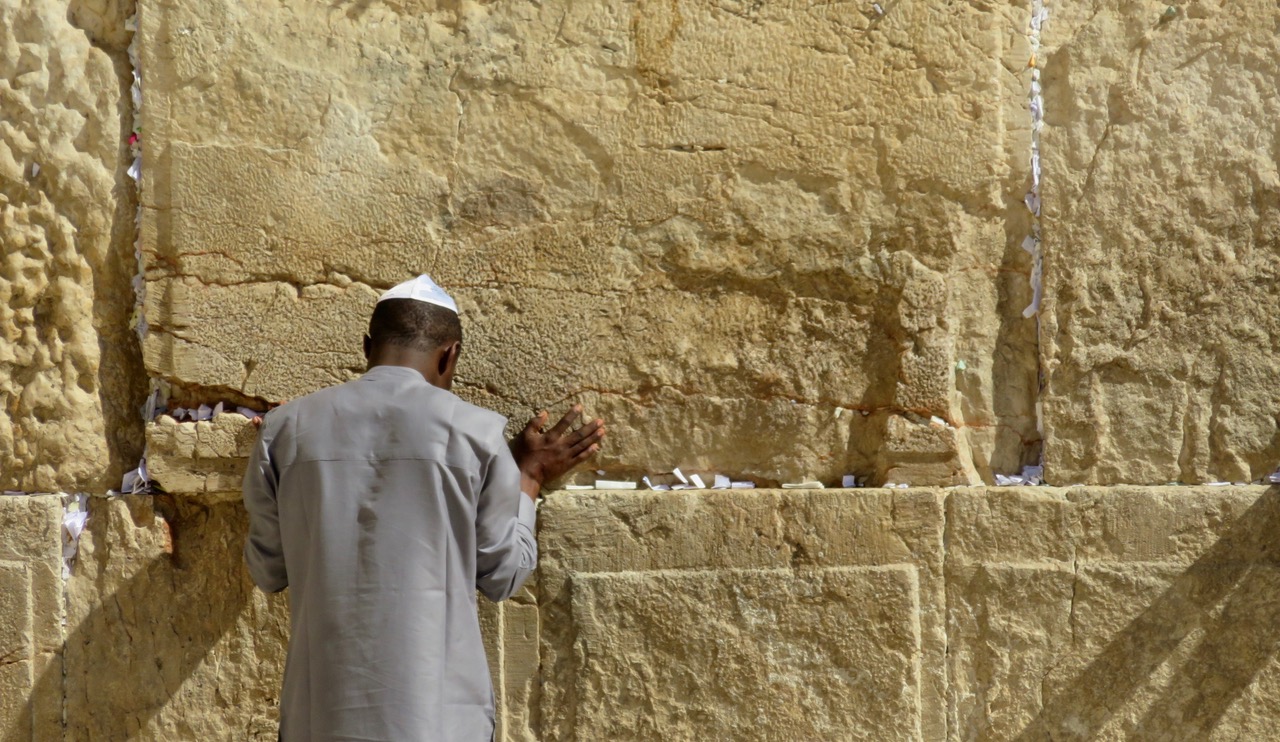
A pilgrim prays at the Wailing Wall, prayer messages all around him.
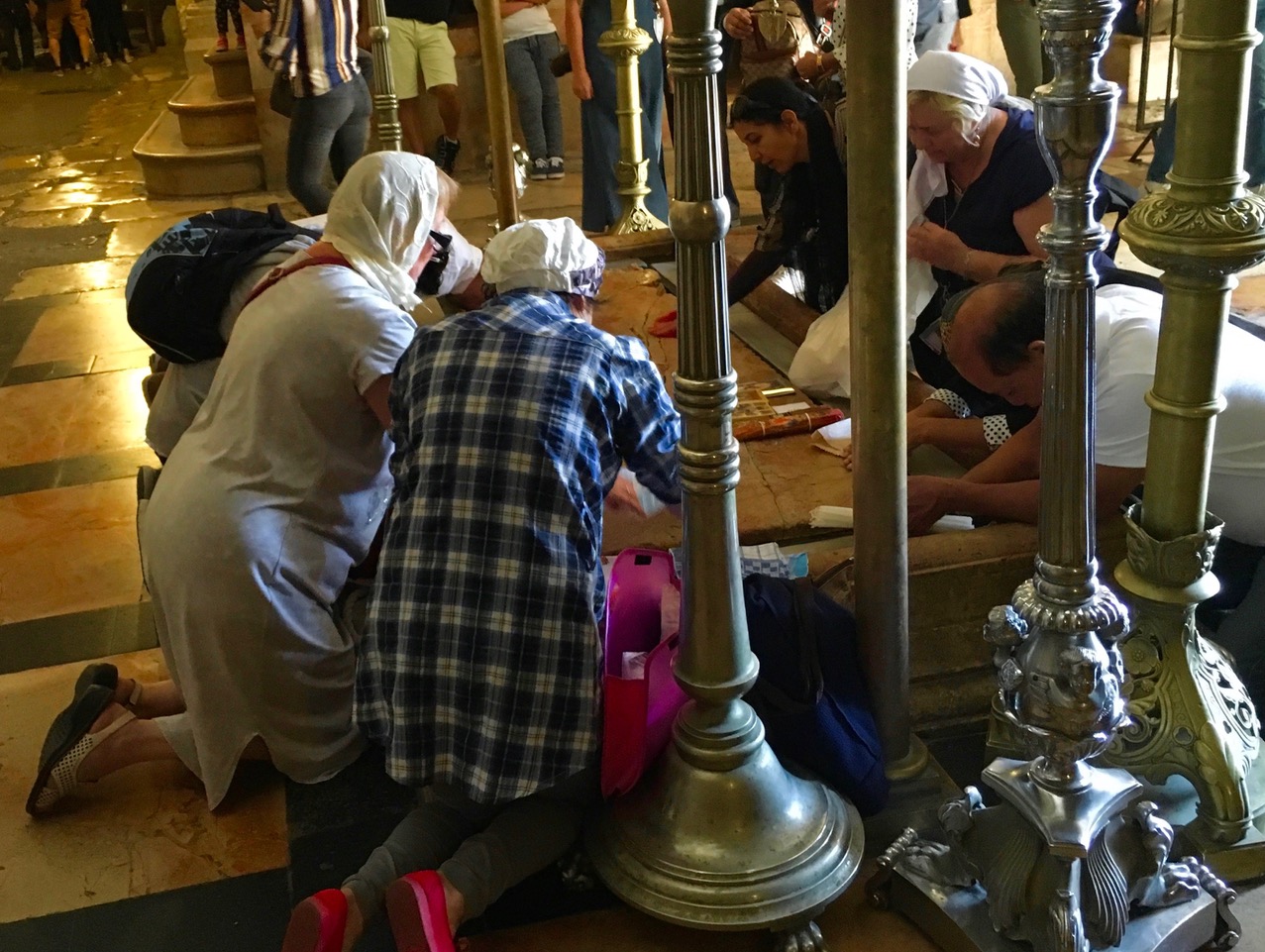
Church of the Holy Sepulchre - pilgrims pray at the Anointing Stone


